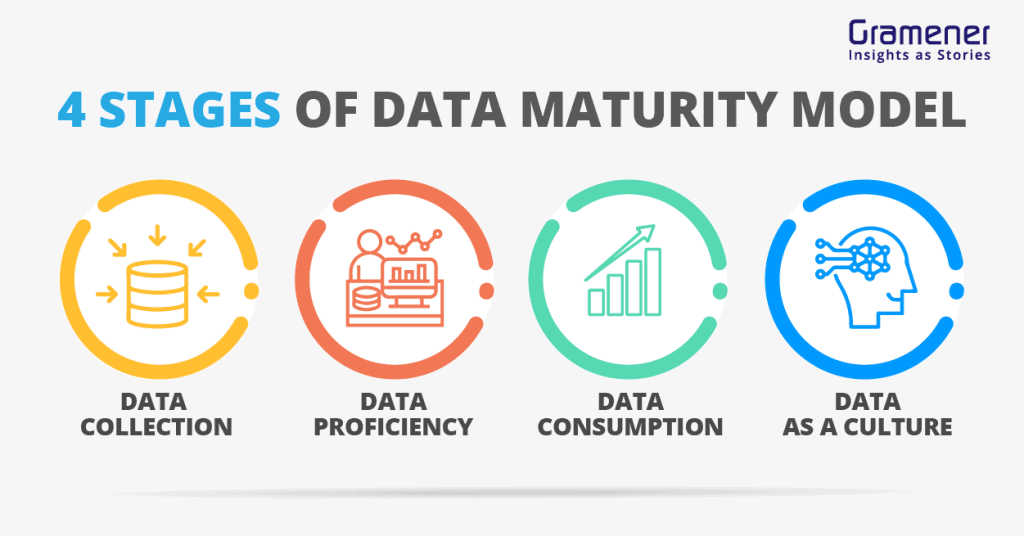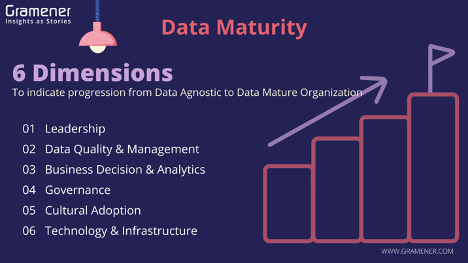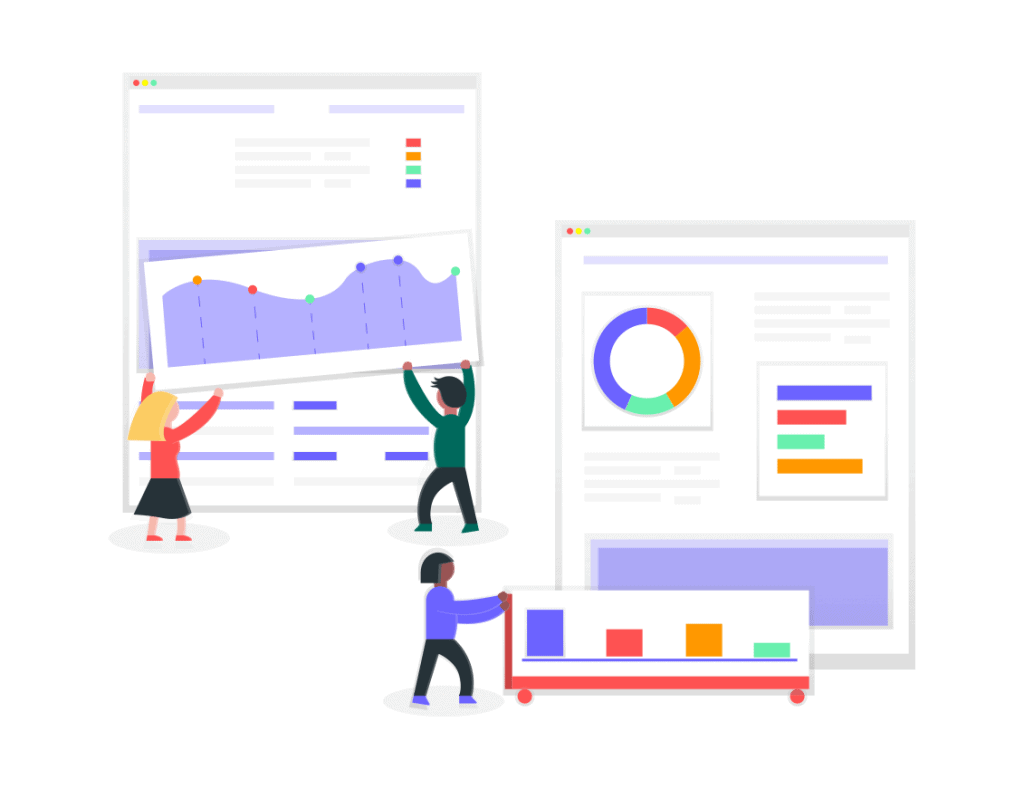The big data analytics market is growing remarkably. In 2019, the global spending on big data analytics projects crossed $180 billion and is expected to grow further in the coming years.
What is worth pondering upon is that most of the data science projects fail despite companies investing heavily in these initiatives. Leaders often question if making massive investments in technology is enough to make organizations data-driven? Or are they missing out on addressing other critical aspects of data?
The struggle of Kmart in implementing analytics solutions speaks a lot in favor of the arguments mentioned above. The organization failed to implement the new business intelligence tool because it could not embrace the modernized inventory management system, which was a product of its analytics initiatives.
This was a clear case of lacking leadership that hampered decision-making as well as the adoption of best statistical practices in the company.
Find out where does your organization stand in the levels of data science maturity
Take Free Data Maturity Assessment
Table of Contents
Introduction to Data Maturity
Data Maturity refers to the capabilities of an organization in utilizing the data they produce or aggregate. The better the organization can use data, the more data mature it is said to be on the maturity scale.
There are 4 stages of the data maturity model through which organization can identify their position and plan a roadmap.

Check out our detailed article to know more about what is data science maturity and how to step in the model to get maximum value out of enterprise data.
The volume, velocity, and variety of available data are increasing across industries and companies. What’s important is how organizations will be able to utilize it. After all, data resources are just one amongst many factors that bridge the gap between the current and desired capabilities of an organization by moving up in data and analytics maturity.
The process to improve the data maturity commences by assessing the current capabilities of your organization. Without this understanding, the organizations may engage in overoptimistic projects, not in line with their current capacity. For instance, an organization trying to fit advanced predictive models in the absence of quality data is most likely to end up wasting resources.
This serves as a good starting point for the company and provides a coherent way to plan and to reach organization destination with the data science initiatives.
How to Scale Up in Data Maturity Model?
There are multiple facets to climbing the levels of data maturity apart from data quality and data management, and maturing simultaneously on all these fronts is critical to success. Here are six dimensions that are good indicators of progression on the maturity ladder.

Leadership

The decision to implement a data and analytics solution in your organization should be top-down, i.e. it should stem out of business objectives, and not the other way round.
Big data projects implemented without having a clear business strategy in mind are often dropped mid-way because of low perceived value.
When leaders understand the strategic importance of data, it is the first step to moving towards maturity. As you progress, the executives must share best practices within the organization and become the forebearers of maturity upscaling.
Data Quality and Management

The basic necessity for a data-driven solution is the presence of useful quality data.
Your organization must make efforts to bring about consistency in the data they possess, centralize the siloed data as you progress, and eventually be able to integrate the internal and external data sources well enough.
The data pool will improve from primarily structured data to multi-structured data as well. In a nutshell, data management should change from reactive to proactive as you move up the hierarchy.
Business Decision and Analytics

In the initial stages, you might neither have sufficient tools nor expertise, and the analytics efforts will mostly be ad hoc. However, with improvements in data quality in your organization, simultaneous advances in the tools should accompany.
For example, a progression from descriptive and diagnostic to more complex techniques like predictive models, scenario planning, risk analysis and mitigation, and other methods like social media analytics, geospatial analytics, text analytics, network analytics, or stream mining.
In mature companies, the projects should be prioritized based on their alignment with your business objectives.
Governance

With increasing data in your organization, various business units must start establishing formal processes for recording, storing and sharing of data, gradually moving on to robust organization-wide governance efforts led by a Chief Data Officer.
Equally important are data privacy issues. Your company should progress from hiring lawyers on data issues from need basis to appointing a full-time Chief Privacy Officer for bringing in best practices for data privacy and ethics-related affairs.
Cultural Adoption

This is a significant hindrance in the path upwards. It might be difficult for people to embrace data for decision-making, instead of their gut feeling. Hence, fighting resistance from the people will constitute some of the initial challenges in the journey to improve data maturity. First, information sharing and data collaboration processes should be improved.
People training and knowledge management will become the second source of rescue. Data scientists, analysts, software developers, and the likes are said to have red skills. However, these skills alone do not spur analytics projects, suggesting the need for people who can do change management and influence people, i.e. those with blue skills like communication.
Purple people are those who possess the right mix of blue and red skills, and these purple champions will aid the cultural change mentioned above.
They must foster the data culture in your company by standardizing data sharing and collaboration processes, creating sufficient upskilling opportunities for its people, recognizing and rewarding analytics talent organization-wide and introducing innovative methods for its people to welcome the change.
Technology and Infrastructure

Last but not least is the need for an agile process to deploy analytics in your organization. A data-agnostic organization will have a minimal technology infrastructure. It may support only ad-hoc analytics and rigid operations that would limit collaboration across business units.
The IT team in your company should be gradually improved so that it can support analytics tools required by various units of the organization, and subsequently, the process to access and deploy these tools should be made simpler.
These Agile processes will ultimately help your people use high-quality data and advanced analytics tools quickly and efficiently for achieving the business objectives set by your leadership.
Simultaneous upskilling in all these areas will help organizations focus their efforts directionally to maximize their returns. When the organizations genuinely embrace the importance of this progression, the data and analytics initiatives will start falling in place.
How Walmart Excelled in Data Maturity
The success of Walmart in implementing analytics illustrates how the factors mentioned above are critical to success. Walmart’s leadership started with a clear vision which was to understand their customers’ wants and needs.
To achieve this, they collected around 2.5 petabytes of unstructured data from over a million customers per hour. They analyzed it for optimizing the bidding of keywords on a daily basis and for improving its supply chain management.
The agenda was simple: to optimize the shopping experience for each of its online and in-store customers through the use of actionable intelligence.
This resulted in a 10-15% increase in its online sales in incremental year-over-year revenue.
This success can be attributed to the way Walmart built capacity to collect and store data via a complex network of data management systems, the use of best statistical practice, and leadership’s commitment to applying business analytics to strategic decision making.
Excel in Data Science Journey with Gramener
At Gramener, we dedicatedly work with top executives and help them transform into a data-driven organization. The aim of our data science consulting, which includes executive education, and a variety of data advisory workshops is to lay a successful data science roadmap by assessing the level of data maturity of the organization. Take a free assessment and find out where does your organization stand in the levels of data maturity.
References
- Big Data Analytics Industry Report 2020 – Rapidly Increasing Volume & Complexity of Data, Cloud-Computing Traffic, and Adoption of IoT & AI are Driving Growth, 2020
- The Challenges of Business Analytics: Successes and Failures (Liu, Han, & DeBello, 2018)
- Becoming an Insight Driven Organization, 2016
- The Challenges of Business Analytics: Successes and Failures (Liu, Han, & DeBello, 2018)
Note: This article was written and published by Shivangi Sahu. Shivangi worked as a data science consulting trainee at Gramener.

